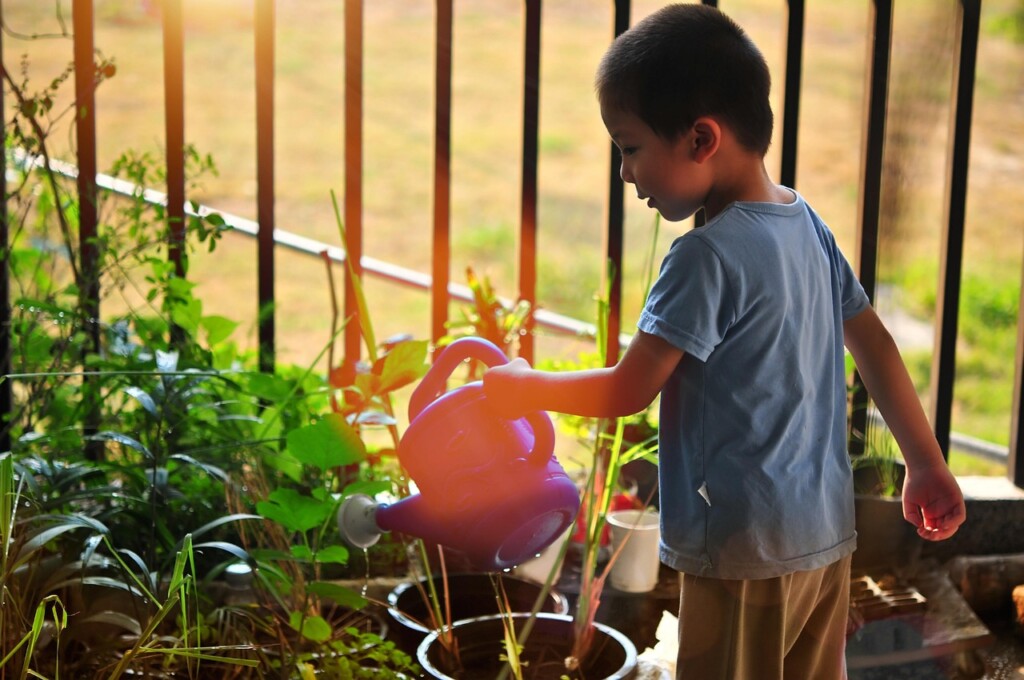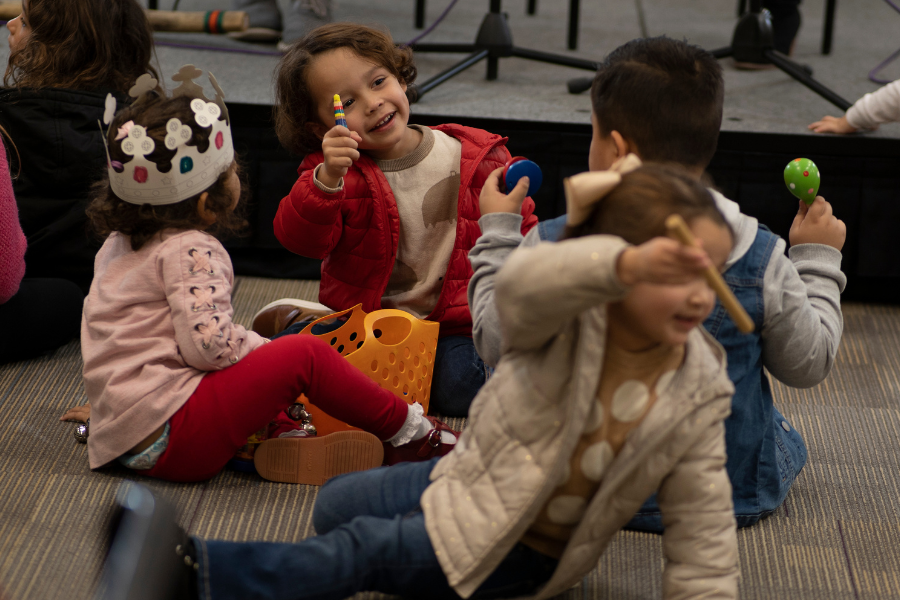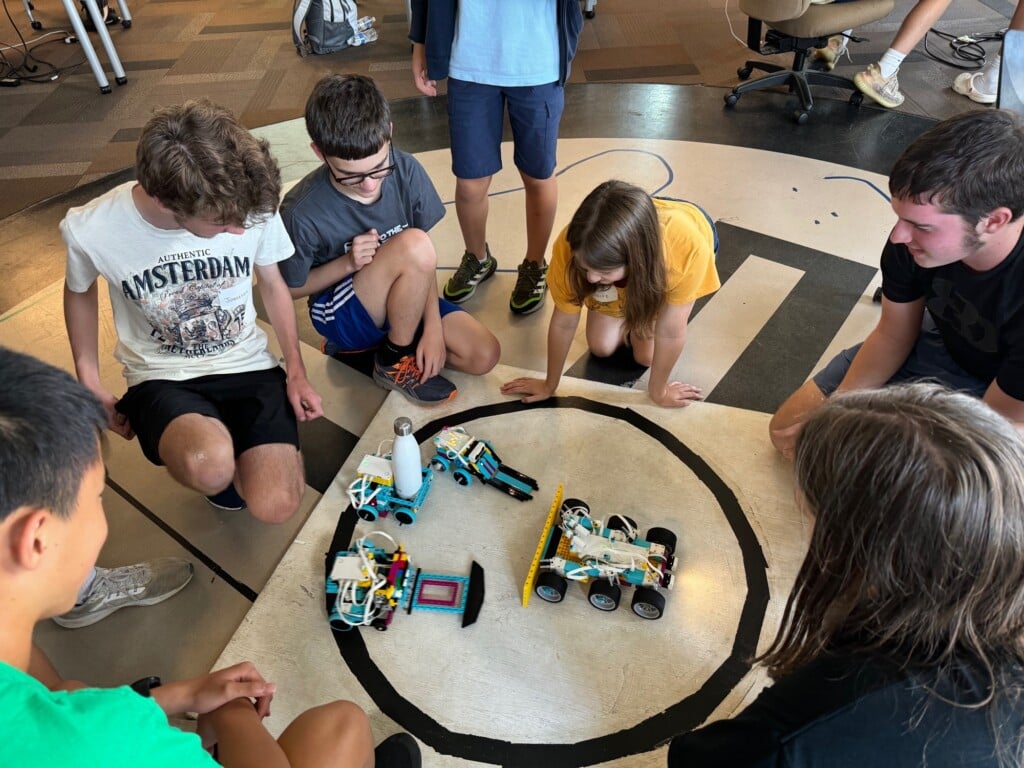GARDEN STATE: Easy tips for gardening with your kids

Looking for a great way to spend time with your kids that’s fun, affordable, and gets them off their screens? Gardening is an ideal activity. Whether you plant one in your yard, on your deck, or on a kitchen windowsill, kids can reap many valuable lessons and therapeutic benefits from getting messy in the garden.
Age of Adventure
There is no wrong age to introduce your children to the wonders of gardening. “Infants can sit in their seat or stroller and watch their parents as they work in the garden,” says Emily Shipman, executive director of Kids Gardening.
As toddlers, the focus should be on sensory exposure more than teaching specific skills. “Allow preschoolers to use their senses,” Shipman explains. “Smell the flowers, taste the herbs, feel the soil… Manipulating the soil and planting seeds is great for developing gross and fine motor skills.”
By kindergarten, kids are ready to learn through gardening. “There are so many academic lessons that can be taught from science to math to literature and art,” Shipman says, “all through spending time gardening.”
Kids can learn how food grows, draw what they see in the garden, or read books about planting that correlate to hands-on work in their garden. “The sky really is the limit,” Shipman says. “On our website, we post simple lessons and over 1000 free downloadable exercises parents can tweak for use with kids of almost any age.”
If you have older kids, it’s not too late to introduce them to gardening. “One of the best things about gardening is that it’s a skill you can learn at any age, even as an adult,” Shipman says.
Focus on Fun
Remeber is to keep it fun and not too serious. “For beginning gardeners, you want to choose plants that are easy to grow in your environment and don’t require too much effort,” Shipman says. “Sunflowers, cherry tomatoes, or marigolds are ideal options.” If you aren’t sure what will grow in your climate or space, check with an expert at a local nursery.
Let kids have a voice in what to plant. “Bring your child to a local nursery and let them choose the plants that speak to them,” Shipman says. “It’s especially rewarding to grow something yourself in your garden that you can then eat. For example, if your child plants mini herbs like basil or oregano, they can be used in eggs, sauces, and sandwiches. My kids opted to grow cherries and blueberries in our garden. Half of what we grow doesn’t even make it in the house because they eat them as they pick them.”
Be cognizant of the growing conditions. Avoid choosing a high-maintenance plant if you can’t tend to it daily. Also, consider timing. “Kids tend to need more instant gratification,” Shipman says. “It’s probably better to start with something that grows quickly, like beans or herbs, instead of something like eggplant, which will take a long time to mature.” Or plan a garden with various plants that will bloom throughout the next few months. For example, you can plant herbs for now, carrots to eat in late summer, and pumpkins that will be ready in September.
A Growth Mindset
When it comes to gardening, there’s no one right way to begin. “If you have the time and interest to grow a plant from seeds, that is great,” Shipman says. “But there is also nothing wrong with buying a tomato plant at a nursery, replanting and tending to it. Kids can learn from gardening whether it’s in their yard or a small container on the windowsill of their kitchen that they take care of.”
Set realistic expectations. Shipman advises starting out small with just one or two plants and not a full garden. “People will often say to me, ‘You have a green thumb,’ but I don’t believe in that concept,” Shipman says. “It’s not that I have some unique talent or magic formula. I love gardening and have been doing it for a long time, so I have learned much about caring for plants.”
Shipman admits that some of the most valuable lessons she has learned have come from disappointments in the garden. “I’ve killed a lot of plants,” she says, “but I don’t stress about it. Plants are easily replaceable. It’s a low-level risk in the garden. If you overwater a plant and it dies, you learn not to do that the next time. Gardens encourage a growth mindset.”
RANDI MAZZELLA is a freelance writer specializing in parenting, teen issues, mental health, and wellness.









